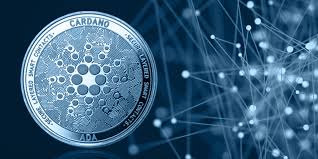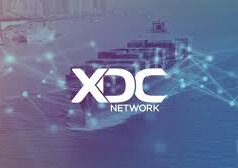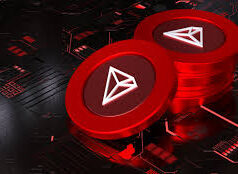Hey crypto enthusiasts, let’s talk about Cardano—a blockchain that’s been turning heads for its unique approach to scalability, sustainability, and real-world impact. Whether you’re a seasoned HODLer or just curious about what makes Cardano tick, this post is your guide to understanding why this project stands out in the crowded crypto space. From its tech-driven roots to its growing ecosystem, let’s dive into what makes Cardano, well, Cardano.
The Heart of Cardano: A Research-Driven Vision
Cardano isn’t your average blockchain. Launched in 2017 by Charles Hoskinson, one of Ethereum’s co-founders, it’s built on a foundation of rigorous academic research and peer-reviewed development. Unlike many projects that rush to market, Cardano takes a methodical approach, prioritizing science over hype. Its creators, through Input Output Global (IOG), aim to deliver a blockchain that’s secure, scalable, and sustainable, with a focus on solving real-world problems like financial inclusion and decentralized governance.
The native token, ADA, powers the network and is named after Ada Lovelace, the 19th-century mathematician and world’s first computer programmer. As of July 19, 2025, ADA is trading at around $0.45, with a market cap of $16.5 billion, ranking it among the top 10 cryptocurrencies on CoinGecko. Its 24-hour trading volume is hovering at $350 million, showing steady interest from traders and investors alike. Posts on X are buzzing with excitement about recent network upgrades, with users like @CardanoFan123 calling it “the sleeping giant of crypto.”
Layered Architecture: Ouroboros and Beyond
What sets Cardano apart is its layered architecture, designed to balance speed, security, and flexibility. The blockchain is split into two core layers:
- Cardano Settlement Layer (CSL): This handles transactions and value transfer, making sure ADA moves quickly and securely. It’s like the financial backbone of the network.
- Cardano Computation Layer (CCL): This is where smart contracts and decentralized applications (dApps) live, giving developers the tools to build everything from DeFi platforms to NFT marketplaces.
At the core of Cardano’s tech is Ouroboros, its proof-of-stake (PoS) consensus mechanism. Unlike Bitcoin’s energy-hungry proof-of-work, Ouroboros is eco-friendly, using a fraction of the energy while maintaining top-notch security. It randomly selects stake pools—groups of ADA holders who validate transactions—to keep the network decentralized. This setup lets anyone with ADA stake their tokens and earn rewards, currently averaging 3-5% annually, depending on the pool.
Recent upgrades, like the Chang hard fork in 2024, have taken Cardano to new heights. The hard fork introduced advanced smart contract capabilities through Plutus, a programming language built for secure and efficient dApps. It also paved the way for decentralized governance, letting ADA holders vote on network upgrades and funding proposals through Project Catalyst, a community-driven treasury with over $1 billion in ADA allocated to projects.
The Ecosystem: DeFi, NFTs, and Real-World Impact
Cardano’s ecosystem is growing fast, with over 4,000 dApps and projects in development as of mid-2025. DeFi is a big focus, with platforms like SundaeSwap and Minswap offering decentralized trading, lending, and yield farming. SundaeSwap, for example, has a total value locked (TVL) of $150 million, while Minswap’s user-friendly interface is drawing in newbies and pros alike. Cardano’s low transaction fees—often under $0.10—make it a go-to for DeFi users tired of Ethereum’s gas fees.
NFTs are another hot spot. Cardano’s NFT marketplaces, like JPG Store and CNFT.io, have exploded in popularity, with millions in trading volume. Artists and collectors love the low costs and fast transactions, and projects like SpaceBudz and Clay Nation are building vibrant communities. If you’re into digital collectibles, Cardano’s NFT scene is worth checking out.
But Cardano’s mission goes beyond finance and collectibles. It’s making waves in the real world, especially in developing regions. In Africa, Cardano has partnered with governments and organizations to tackle issues like education and identity verification. For example, its work with Ethiopia’s Ministry of Education created a blockchain-based system to store academic records for millions of students, fighting fraud and improving access to opportunities. Similar projects are underway in Tanzania and Nigeria, showing Cardano’s commitment to global impact.
Staking and Community: Power to the People
One of Cardano’s biggest draws is its staking model. Unlike some blockchains where staking feels like a tech degree is required, Cardano makes it simple. You can delegate your ADA to one of over 3,000 stake pools directly from wallets like Daedalus or Yoroi, no lock-up period needed. Rewards are distributed every five days (an “epoch” in Cardano lingo), and you don’t have to give up control of your funds. It’s a win-win: you earn passive income while helping secure the network.
The Cardano community is another strength. With millions of users worldwide and active hubs on X, Reddit, and Discord, it’s a tight-knit group that’s passionate about the project’s vision. The Cardano Summit, held annually, brings together developers, investors, and enthusiasts to share ideas and drive innovation. X posts from accounts like @ADAWhale highlight the community’s excitement, with many predicting ADA could hit $1 by 2026 if the ecosystem keeps growing.
Challenges and Criticism
No project is perfect, and Cardano’s no exception. Critics often point to its slow development pace—Cardano took years to roll out smart contracts, lagging behind competitors like Ethereum and Solana. Some X users, like @CryptoSkepticX, argue it’s “overhyped” compared to faster-moving chains. Scalability is another concern; while Cardano’s Hydra scaling solution promises up to 1 million transactions per second, it’s still in testing and not fully live as of mid-2025.
Market volatility is also a factor. ADA’s price has seen highs of $3.10 during the 2021 bull run but is down 85% from that peak. While recent upgrades have boosted confidence, broader market trends could keep prices choppy. Still, Cardano’s focus on long-term value over short-term pumps has earned it a loyal following.
How to Get Started with Cardano
Ready to join the Cardano ecosystem? Here’s how to dive in:
- Get a Wallet: Download Daedalus (full node) or Yoroi (light wallet) to store your ADA securely. Both support staking and are easy to set up.
- Buy ADA: You can grab ADA on exchanges like Binance, Coinbase, or AscendEX. As of July 19, 2025, it’s trading at $0.45, so it’s a relatively affordable entry point.
- Stake Your ADA: Choose a stake pool in your wallet and delegate your ADA. Look for pools with low fees (1-2%) and good performance to maximize rewards.
- Explore dApps: Check out SundaeSwap or Minswap for DeFi, or browse JPG Store for NFTs. Most dApps are accessible via your wallet’s browser integration.
- Join the Community: Follow @Cardano and @InputOutputHK on X, join the Cardano subreddit, or hop into Discord to stay updated and connect with others.
The Road Ahead
Cardano’s blend of research-driven tech, eco-friendly design, and real-world applications makes it a standout in the blockchain world. Its growing DeFi and NFT ecosystems, combined with projects in Africa and beyond, show it’s not just about trading—Cardano’s building something bigger. Whether you’re here to stake, trade, or explore dApps, there’s plenty to love about this blockchain.
So, what’s your take? Are you all-in on Cardano, or just keeping an eye on it? Drop your thoughts in the comments, and let’s get the conversation started!
Sources: CoinGecko, CoinMarketCap, Input Output Global, Cardano.org, and posts on X




























Cardano still has a long way to go. Solana is still the GOAT
Never used ADA, and don’t think I ever will. It’s way to boring for a blockchain
Many gas friendly blockchains really need to find a way to get to the top of the list